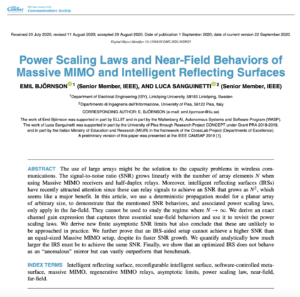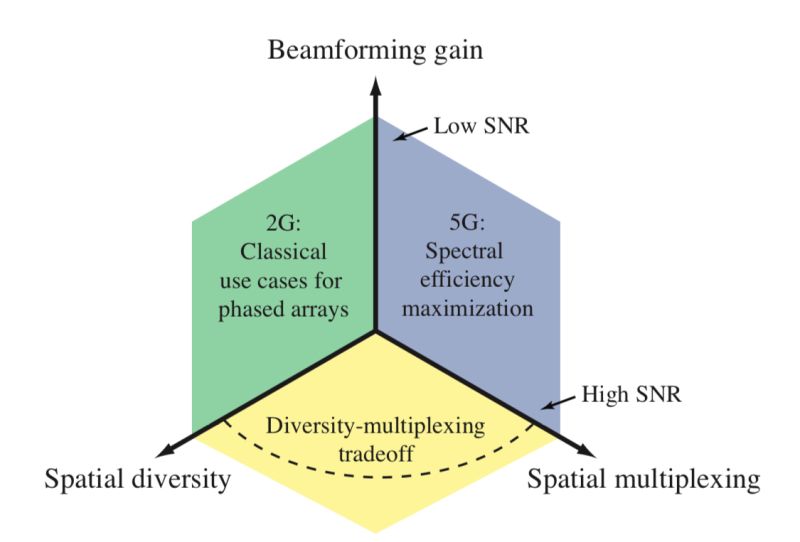The golden frequencies for wireless access are in the band below 6 GHz. Why are these frequencies so valuable? The reasons, of course, are rooted in the physics. First, the wavelength is short enough that a (numerically) large array has an attractive form factor, enabling spatial multiplexing even from a single antenna panel. At the same time, the wavelength is large enough that a sufficiently large aperture can be obtained with a reasonable number of antennas – which, in turn, directly translates into a favorable link budget and high coverage. Second, below 6 GHz, Doppler is low enough, even at high mobility, that reciprocity-based beamforming based on uplink pilots for channel estimation works without relying on prior assumptions on the propagation environment, let alone on the fading statistics. This directly translates into robustness, simplicity of implementation, and scalability with respect to the number of service antennas. Third, these frequencies are not hindered so much by blockage, and strong multipath components can guarantee connectivity even when there is no line-of-sight, while in contrast, for mmWave a human blocking the line-of-sight path can suffice to break the link. Finally, analog microelectronics for the golden bands is mature, and very energy-efficient.
Distributed MIMO (D-MIMO) with reciprocity-based beamforming is the natural way of best exploiting the golden frequencies. This technology naturally operates in the [geometric] near-field of the “super-array” collectively constituted by all antenna panels together. In fact, the actual antenna deployment hardly matters at all! With reciprocity-based beamforming, the physical shape of the actual beams, and grating lobe phenomena in particular, become irrelevant. If anything, given a set of antennas, it is advantageous to spread them out over as large aperture as possible. The only definite no-no is to place antennas closer than half a wavelength together: such dense packing of antennas is almost never meaningful, as sampling points lambda/2-spaced apart captures essentially all the degrees of freedom of the field; putting the antennas closer results in coupling effects that are usually of more harm than benefit.
REINDEER is the European project that develops and demonstrates D-MIMO for the golden frequencies. What are the most important technical challenges? One is, down-to-earth, to handle the vast amounts of baseband data, and process them in real time. Another is time and phase synchronization of distributed MIMO arrays: antenna panels driven by independent local oscillators must be re-calibrated for joint reciprocity every time the oscillators have drifted apart. Locking the clocks using cabling is possible in principle, but considered very expensive to deploy. A third is initial access, covering space uniformly with system information signals, and waking up sleeping devices. A fourth is energy-efficiency, at all levels in the network. A fifth is the integration of service of energy-neutral devices that communicate via backscattering. D-MIMO naturally offers the infrastructure for that, permitting simultaneous transmission and reception from different panels in a bistatic setup; however, these activities break the TDD flow and must be carefully integrated into the workings of the system.
If sub-6 GHz are gold, then what is silver? Perhaps right above: the 7-15 GHz band, that is intended in 6G to extend the “main capacity” layer. It appears that these bands can still be suitable mobile applications, and that higher carriers (28 GHz, 38 GHz) are appropriate for fixed wireless access mostly. But the sub-6 GHz bands will remain golden and the first choice for the most challenging situations: high mobility, area coverage, and outdoor-to-indoor.
Erik G. Larsson
Liesbet Van der Perre




